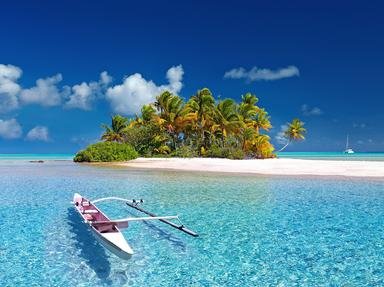Quiz Answer Key and Fun Facts
1. The word guano denotes the accumulated droppings of seabirds or bats. What is the main use of this valuable organic resource?
2. The "Great Guano Rush" started in the 1840s with the intensive mining and export of the rich guano deposits of the Chincha Islands - located off the coast of what country on the Pacific Ocean?
3. The Guano Island Act of 1856 allowed US citizens to take possession of unclaimed, guano-rich islands in the name of the US. Which of these islands in the North Pacific Ocean, still a US territory, is also known for its major role in WWII?
4. Located in the central Pacific Ocean, Howland Island was one of the US guano islands. What famous aviation pioneer disappeared in 1937 when approaching the island?
5. This guano island, a French territory, is the only coral atoll in the Eastern Pacific. What is its name, which might remind you of a fast 19th-century ship?
6. Some small islands off the coast of Namibia, in the southern Atlantic Ocean, are also rich in guano, which is still mined today. What is the name (which might make you think of India) of the cold ocean current that flows along the Namibian coast?
7. A guano island in the Caribbean Sea, and a US insular possession, Navassa Island has been claimed by which troubled country, a former French colony?
8. As a consequence of the War of the Pacific of 1879-1883, what elevated South American country lost its access to the coast and its rich nitrate deposits?
9. Which of these islands is a Norwegian territory in the Southern Hemisphere that, although rich in guano, has never been commercially mined because of its inhospitable conditions?
10. What island nation in the South Pacific, the world's third-smallest sovereign country, was once the richest country per capita in the world, but has now nearly exhausted its guano reserves?
Source: Author
LadyNym
This quiz was reviewed by FunTrivia editor
agony before going online.
Any errors found in FunTrivia content are routinely corrected through our feedback system.
